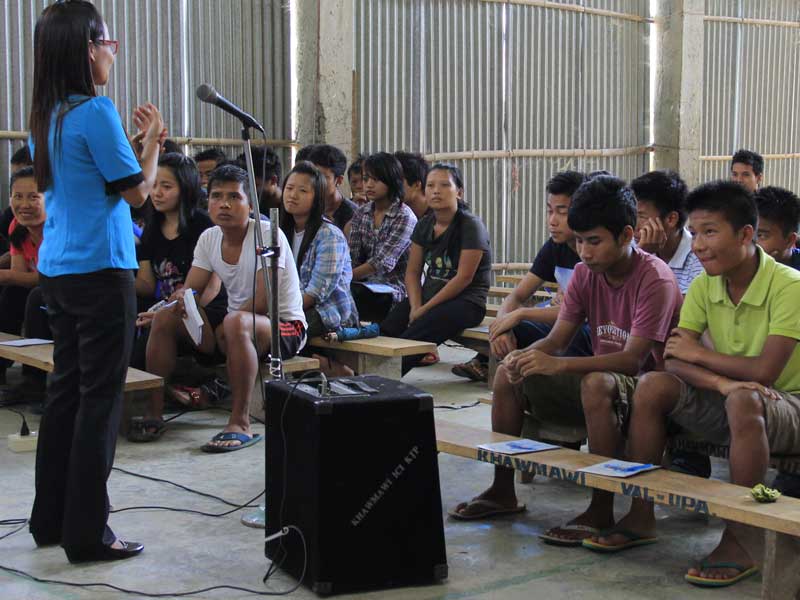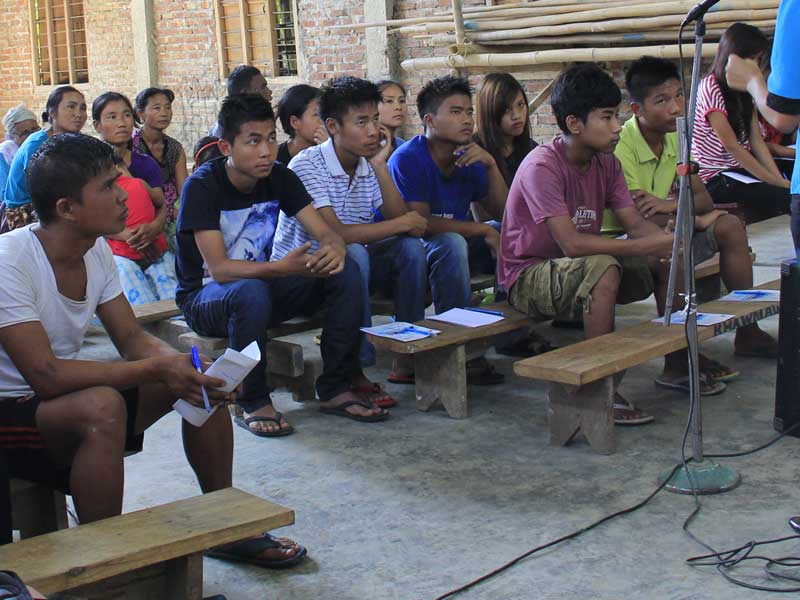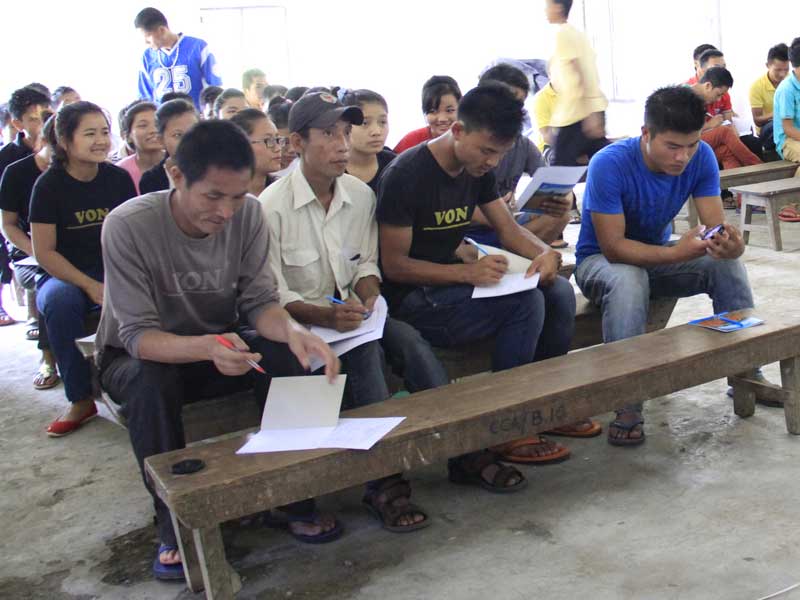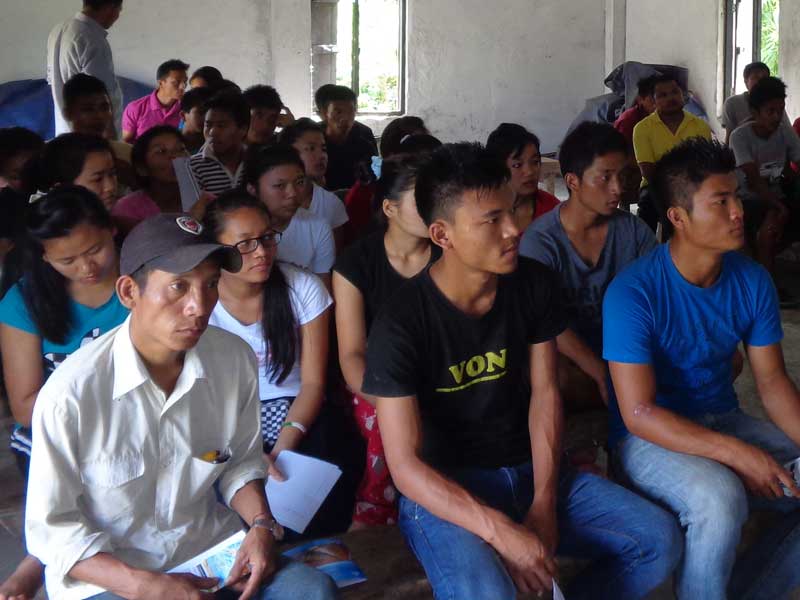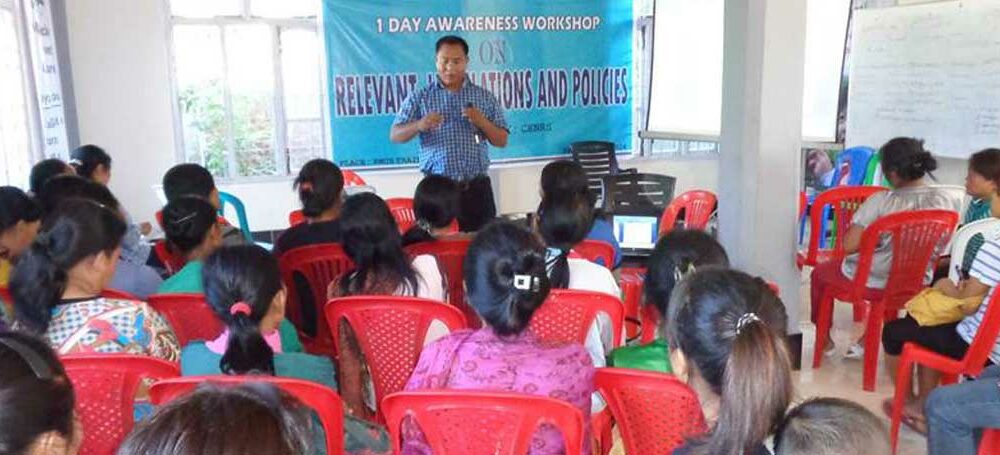In Oct 24, 2014, RWUS organized a district level awareness workshop on Indigenous Peoples Rights…
Workshop on International Humanitarian Law For Youths
The two days workshop was organized by RWUS which is facilitated by Roselyn Ramdinmawi program coordinator RWUS, this program was organized to create awareness on the importance of International Humanitarian law in two different villages in Churachandpur District, Manipur. The participants consists of youths from 5 villages in Churachandpur District
Fundamental to IHL are the following two principles:
- The protection of persons who are not, or are no longer, participating in hostilities; and
- The right of parties to an armed conflict to choose methods and means of warfare is not unlimited
IHL is a part of public international law. Public international law is a broad set of treaties, customary law, principles and norms. The framework traditionally regulated relationships only between states. It has evolved, however, to cover a broad range of actors. IHL is notable in this regard, as it recognizes obligations for both states and non-state armed groups that are parties to an armed conflict.
IHL regulates activity during armed conflict and situations of occupation. It is distinct from, and applies irrespective of, the body of law that regulates the recourse to armed force. This framework is known as the jus ad bellum, and is enshrined in the UN Charter. It regulates the conditions under which force may be used, namely in self-defense and pursuant to UN Security Council authorization. Once there is an armed conflict IHL applies to all the parties, whether or not a party was legally justified in using force under jus ad bellum principles.
At its core IHL represents a balance between military necessity and humanitarian considerations in the context of conflict. Humanity, as a cornerstone of IHL, represents the imperative during conflict to alleviate suffering and save lives, and to treat humanely and respectfully each individual. Military necessity is the justification of measures necessary to achieve a military goal, provided these measures comply with international humanitarian law.
The balancing of humanity and military necessity is seen in the foundational IHL norms of distinction and proportionality. Parties to an armed conflict are required to distinguish, at all times, between civilians and combatants and between civilian objects and military objectives. Additionally, an attack may not be launched if it is anticipated to cause incidental loss of civilian life, injury to civilians, or damage to civilian objects that would be excessive in relation to the direct military advantage anticipated. Additional IHL principles include the duty to take precautions to spare the civilian population before and during an attack, the prohibition against infliction of unnecessary suffering or superfluous injury, and the prohibition of indiscriminate attacks.
IHL classifies armed conflicts as international armed conflict (IAC) or non-international armed conflict (NIAC). Qualifying an armed conflict is an important threshold question necessary to determine which set of rules apply to the conflict: those for IAC (found mainly in the four Geneva Conventions and Additional Protocol I) or those for NIAC (found mainly in Article Three common to the four Geneva Conventions and Additional Protocol II). Situations of occupation are regulated by IHL, namely the Fourth Geneva Convention and Additional Protocol I.
Whether or not an armed conflict is an IAC or NIAC has significant implications. For instance, POW status, as well as combatant status, is found only in the rules applicable to IAC. The rules regulating the conduct of hostilities, as well as humanitarian access and assistance, are more detailed in IAC. All together the treaty rules applicable to IAC total close to 600; those applicable to NIAC number less than 30. This dearth of guidance can pose a challenge because the majority of contemporary conflicts are NIAC. To address this one can look to customary international law, which includes a number of rules that have evolved to address both IAC and NIAC situations.
The definition of an IAC is found in Article Two common to the four Geneva Conventions. It states that the rules of IAC apply to “all cases of declared war or of any other armed conflict which may arise between two or more of the High Contracting Parties . . . . “ Thus, an IAC can only be between two or more states.
In Article Three common to the four Geneva Conventions a NIAC is defined in the negative, as “an armed conflict not of an international character.” Thus, if a non-state armed group is a party to the armed conflict, it will be categorized as a NIAC. This could be if a state is fighting an armed group, or if two armed groups are fighting each other. Common Article three and customary international law would regulate both scenarios. For Additional Protocol II to apply certain requirements must be satisfied. In the armed conflict a state must be on one side, fighting against an armed group. That state must have signed Additional Protocol II for it to apply. Additionally, the non-state armed group must be organized, under a responsible command, and exercise control over part of the territory in such a manner that the group is able to carry out military operations.
Geneva Call engages with armed non-State actors to encourage them to comply with international humanitarian norms, improving the protection of civilians in armed conflict. These international humanitarian norms are enshrined in the Geneva Conventions and other international treaties. While initially focusing on the ban of anti-personnel mines, Geneva Call has expanded its work into additional areas that deserve specific attention, namely the protection of children in armed conflict – notably from recruitment and use in hostilities – as well as the prohibition of sexual violence and gender discrimination. This expansion was envisioned in Geneva Call’s founding statutes and has also been encouraged by armed non-State actors themselves. Geneva Call has also increasingly provided International Humanitarian Law (IHL) training to armed non-State actors, and advice on how to incorporate IHL rules into their codes of conduct and other internal regulations.
Geneva Call developed an innovative mechanism, the Deed of Commitment that allows armed non-State actors to pledge to respect specific humanitarian norms and be held publically accountable for their commitments. They cannot become parties to relevant international treaties, and are generally precluded from participating in norm-making processes. Consequently, they may not feel bound to abide by rules that they have neither put forward nor formally adhered to. Sometimes they are simply not aware of their obligations under IHL.
The Deed of Commitment process gives them the opportunity to formally express their agreement to abide by humanitarian norms and take ownership of these rules.
To date, Geneva Call has developed three such documents:
- Deed of Commitment for Adherence to a Total Ban on Anti-Personnel Mines and for Cooperation in Mine Action, launched in 2000 ;
- Deed of Commitment for the Protection of Children from the Effects of Armed Conflict, launched in 2010 ;
- Deed of Commitment for the Prohibition of Sexual Violence in Situations of Armed Conflict and towards the Elimination of Gender Discrimination, launched in 2012.
Geneva Call’s mission is currently divided into four thematic issues: banning anti-personnel mines, protecting children in armed conflict, prohibiting sexual violence and gender discrimination and respect of humanitarian norms.

